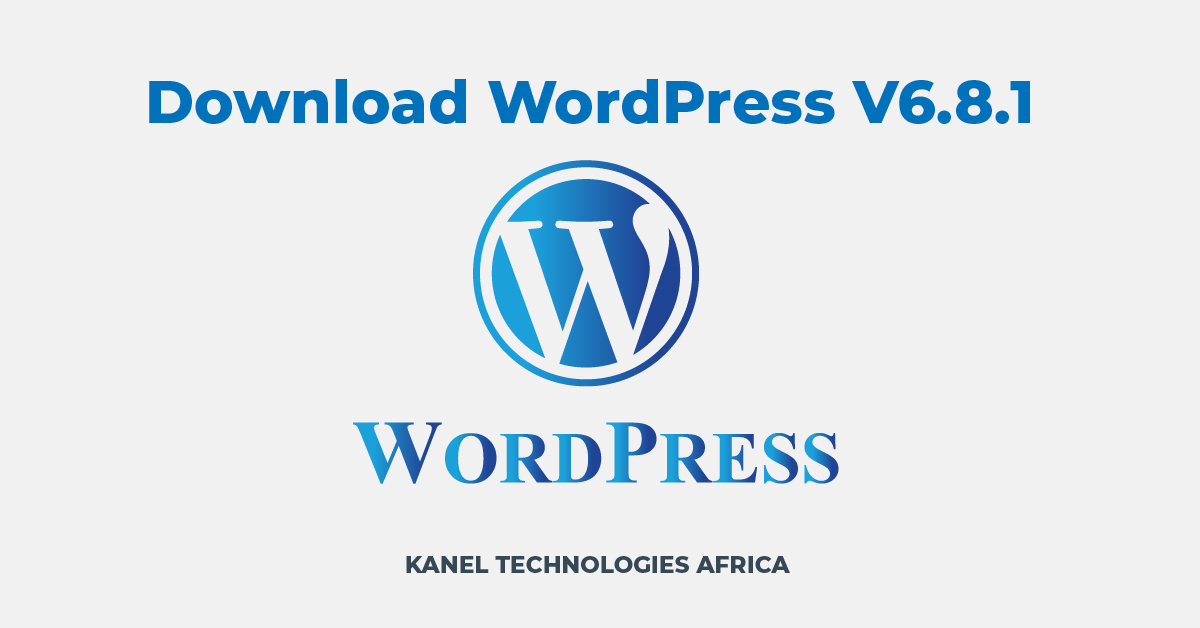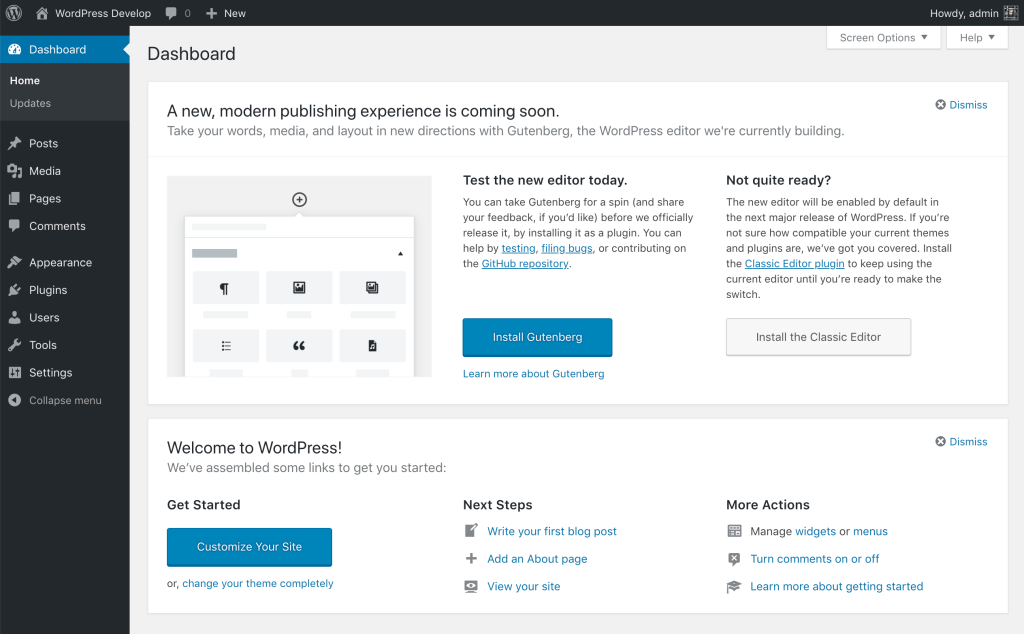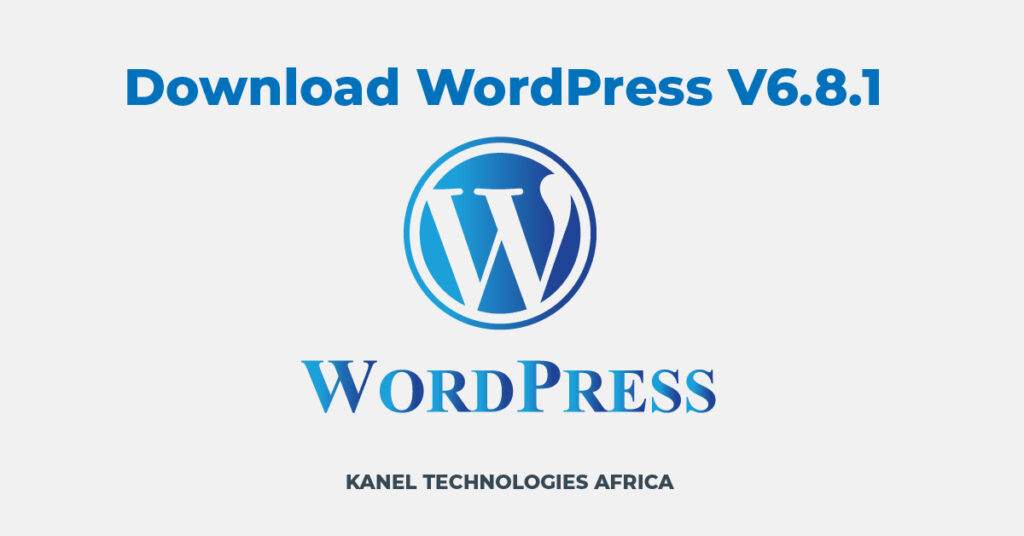
WordPress 6.8.1 maintenance release fixes critical bugs, enhances security, improves block editor performance, and resolves REST API issues.
Download WordPress Version 6.8.1
The WordPress development team has released version 6.8.1, a significant maintenance update that addresses critical bugs and security vulnerabilities discovered in the previous 6.8.0 release. This update continues WordPress’s commitment to providing a stable, secure, and user-friendly content management system for millions of websites worldwide. Understanding what’s new in this release is essential for website owners, developers, and anyone managing WordPress installations.
Understanding Maintenance Releases
WordPress maintenance releases serve a crucial purpose in the ecosystem. Unlike major version updates that introduce new features and functionality, maintenance releases focus primarily on fixing bugs, patching security vulnerabilities, and improving stability. Version 6.8.1 follows this tradition, offering essential improvements without introducing breaking changes or requiring significant adjustments to existing websites.
The release cycle for maintenance updates typically occurs within weeks of a major version launch, addressing issues that surface once millions of users begin interacting with new features in diverse hosting environments and configurations. This rapid response demonstrates WordPress’s commitment to maintaining the platform’s reliability and security.

Critical Bug Fixes in WordPress 6.8.1
The primary focus of version 6.8.1 centers on resolving several critical bugs that affected user experience and site functionality. These fixes address issues that ranged from minor annoyances to problems that could significantly impact website operations.
One of the most notable improvements involves the block editor, where users reported inconsistent behavior when working with specific block patterns. The development team identified and resolved issues related to block insertion, duplication, and template rendering. These fixes ensure that content creators can work more efficiently without encountering unexpected errors or losing their work.
Performance optimizations represent another crucial area of improvement. Users of version 6.8.0 experienced occasional slowdowns when working with large posts containing numerous blocks or complex layouts. The engineering team implemented several performance enhancements that reduce processing overhead and improve responsiveness, particularly noticeable on sites with extensive content libraries or resource-intensive themes.
Security Enhancements and Vulnerability Patches
Security remains paramount in WordPress development, and version 6.8.1 includes several important security patches. While the WordPress security team follows responsible disclosure practices and doesn’t publicly detail specific vulnerabilities until most sites have updated, this release addresses multiple security concerns discovered through the platform’s bug bounty program and security research partnerships.
The security improvements focus on strengthening input validation, preventing potential cross-site scripting vulnerabilities, and enhancing authentication mechanisms. These enhancements protect websites from emerging threats and ensure that WordPress maintains its reputation as a secure platform for businesses, bloggers, and organizations of all sizes.
Website administrators should prioritize installing this update promptly to maintain optimal security posture. WordPress recommends enabling automatic updates for maintenance releases to ensure sites receive critical security patches as soon as they become available.

REST API Improvements
The WordPress REST API received significant attention in this release, with multiple fixes addressing issues that affected third-party integrations and headless WordPress implementations. Developers working with custom applications that consume WordPress data through the REST API will appreciate the improved consistency and reliability of endpoint responses.
Specific improvements include better error handling when dealing with malformed requests, more accurate permission checking for authenticated requests, and enhanced performance when retrieving large datasets. These refinements make the REST API more robust and dependable for complex applications that depend on WordPress as a content backend.
The development team also addressed several edge cases that could cause unexpected behavior when working with custom post types and taxonomies through the REST API. These fixes ensure that developers can confidently build sophisticated applications knowing that the API will behave predictably across different scenarios.
Block Editor Refinements
The block editor, WordPress’s primary content creation interface, received numerous refinements in version 6.8.1. These improvements enhance the editing experience by addressing issues related to block manipulation, pattern insertion, and template customization.
Users working with reusable blocks will notice improved synchronization and more reliable updates across multiple instances. The team resolved issues where changes to reusable blocks sometimes failed to propagate correctly, ensuring content consistency throughout websites.
Typography controls within blocks now function more consistently across different themes and viewing contexts. Font size adjustments, line height modifications, and spacing controls respond more predictably, giving designers greater confidence in their styling choices.
The template editor also received attention, with fixes addressing issues related to template part editing and full-site editing workflows. These improvements make it easier for users to customize their site’s appearance without encountering unexpected errors or limitations.
Database and Performance Optimizations
Behind the scenes, WordPress 6.8.1 includes several database query optimizations that improve performance, particularly on high-traffic websites with large content databases. The development team identified inefficient queries that could cause performance bottlenecks under certain conditions and implemented more efficient alternatives.
These optimizations are especially beneficial for sites using custom post types extensively or managing large taxonomies. Query caching mechanisms received improvements that reduce redundant database calls, resulting in faster page load times and reduced server resource consumption.
The update also includes refinements to WordPress’s object caching integration, making it easier for sites using advanced caching solutions like Redis or Memcached to achieve optimal performance. These improvements ensure that WordPress scales effectively for high-performance applications.
Theme and Plugin Compatibility
WordPress 6.8.1 maintains excellent backward compatibility with existing themes and plugins. The development team takes great care to ensure maintenance releases don’t introduce breaking changes that could disrupt existing websites. Extensive testing across popular themes and plugins confirms that the update integrates smoothly with the broader WordPress ecosystem.
However, as with any update, website administrators should maintain regular backups and test updates in staging environments before deploying to production sites. This precautionary approach ensures that any site-specific issues can be identified and addressed without affecting live traffic.
The update includes improvements to theme.json handling, resolving issues where certain theme configurations weren’t being applied correctly. These fixes ensure that block themes function as intended and that developers can rely on theme.json for comprehensive site styling.
Accessibility Improvements
WordPress continues its commitment to accessibility with several refinements in version 6.8.1. The team addressed issues affecting keyboard navigation, screen reader compatibility, and focus management within the block editor and administrative interfaces.
These improvements ensure that WordPress remains usable for people with disabilities, supporting content creators and website administrators regardless of their physical capabilities. Proper focus indicators, logical tab orders, and appropriate ARIA labels contribute to a more inclusive web platform.
The accessibility team also resolved issues affecting color contrast in certain admin interfaces, ensuring that visual elements meet WCAG guidelines for sufficient contrast ratios. These refinements benefit all users by improving readability and reducing eye strain during extended editing sessions.
Comparison Table: WordPress 6.8.1 vs 6.8.0
| Feature/Aspect | WordPress 6.8.0 | WordPress 6.8.1 |
|---|---|---|
| Block Editor Stability | Occasional issues with block patterns | Resolved block insertion and duplication bugs |
| Performance | Slowdowns with large posts | Optimized processing for complex layouts |
| Security Patches | Standard security | Multiple vulnerability fixes included |
| REST API Reliability | Some inconsistencies reported | Improved error handling and consistency |
| Database Queries | Standard efficiency | Optimized queries for better performance |
| Reusable Blocks | Sync issues reported | Fixed synchronization across instances |
| Typography Controls | Inconsistent behavior | More predictable styling responses |
| Template Editor | Minor bugs present | Resolved template part editing issues |
| Object Caching | Basic integration | Enhanced caching mechanism support |
| Accessibility | Good baseline | Improved keyboard navigation and focus |
| Theme Compatibility | Excellent | Maintained with theme.json fixes |
| Update Priority | Optional | Recommended for security |
Installation and Update Recommendations
Installing WordPress 6.8.1 is straightforward for most users. The platform’s automatic update system will prompt administrators to update through the dashboard, or the update can be initiated manually from the Updates page. The process typically completes within minutes, depending on hosting performance and internet connection speed.
Before updating, administrators should ensure their hosting environment meets WordPress’s minimum requirements: PHP 7.4 or greater and MySQL 5.7 or MariaDB 10.4 or greater. While WordPress functions with older versions, using current software ensures optimal performance and security.
For larger websites or those with complex configurations, testing the update in a staging environment before deploying to production represents best practice. This approach allows administrators to verify compatibility with existing customizations and identify any potential issues before affecting live visitors.

Conclusion
WordPress 6.8.1 represents a solid maintenance release that addresses important bugs, security vulnerabilities, and performance issues discovered in version 6.8.0. The update demonstrates the WordPress community’s dedication to maintaining a stable, secure, and high-performing platform for content creators and developers worldwide.
Website owners should prioritize installing this update to benefit from the security patches, performance improvements, and bug fixes it provides. The update process is straightforward, and the improvements significantly enhance the overall WordPress experience without introducing disruptive changes or compatibility issues.
As WordPress continues evolving, maintenance releases like 6.8.1 play a crucial role in ensuring the platform remains reliable and trustworthy for the diverse community that depends on it daily. By staying current with updates, website administrators protect their sites while enjoying the latest refinements and optimizations that keep WordPress at the forefront of content management systems.

